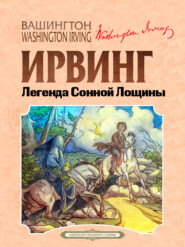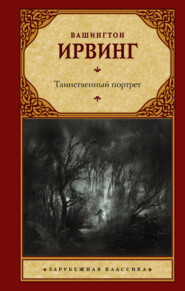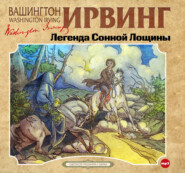По всем вопросам обращайтесь на: info@litportal.ru
(©) 2003-2025.
✖
The Adventures of Captain Bonneville, U. S. A., in the Rocky Mountains and the Far West
Настройки чтения
Размер шрифта
Высота строк
Поля
It is not easy to do justice to the exulting feelings of the worthy captain at finding himself at the head of a stout band of hunters, trappers, and woodmen; fairly launched on the broad prairies, with his face to the boundless West. The tamest inhabitant of cities, the veriest spoiled child of civilization, feels his heart dilate and his pulse beat high on finding himself on horseback in the glorious wilderness; what then must be the excitement of one whose imagination had been stimulated by a residence on the frontier, and to whom the wilderness was a region of romance!
His hardy followers partook of his excitement. Most of them had already experienced the wild freedom of savage life, and looked forward to a renewal of past scenes of adventure and exploit. Their very appearance and equipment exhibited a piebald mixture, half civilized and half savage. Many of them looked more like Indians than white men in their garbs and accoutrements, and their very horses were caparisoned in barbaric style, with fantastic trappings. The outset of a band of adventurers on one of these expeditions is always animated and joyous. The welkin rang with their shouts and yelps, after the manner of the savages; and with boisterous jokes and light-hearted laughter. As they passed the straggling hamlets and solitary cabins that fringe the skirts of the frontier, they would startle their inmates by Indian yells and war-whoops, or regale them with grotesque feats of horsemanship, well suited to their half-savage appearance. Most of these abodes were inhabited by men who had themselves been in similar expeditions; they welcomed the travellers, therefore, as brother trappers, treated them with a hunter’s hospitality, and cheered them with an honest God speed at parting.
And here we would remark a great difference, in point of character and quality, between the two classes of trappers, the “American” and “French,” as they are called in contradistinction. The latter is meant to designate the French creole of Canada or Louisiana; the former, the trapper of the old American stock, from Kentucky, Tennessee, and others of the western States. The French trapper is represented as a lighter, softer, more self-indulgent kind of man. He must have his Indian wife, his lodge, and his petty conveniences. He is gay and thoughtless, takes little heed of landmarks, depends upon his leaders and companions to think for the common weal, and, if left to himself, is easily perplexed and lost.
The American trapper stands by himself, and is peerless for the service of the wilderness. Drop him in the midst of a prairie, or in the heart of the mountains, and he is never at a loss. He notices every landmark; can retrace his route through the most monotonous plains, or the most perplexed labyrinths of the mountains; no danger nor difficulty can appal him, and he scorns to complain under any privation. In equipping the two kinds of trappers, the Creole and Canadian are apt to prefer the light fusee; the American always grasps his rifle; he despises what he calls the “shot-gun.” We give these estimates on the authority of a trader of long experience, and a foreigner by birth. “I consider one American,” said he, “equal to three Canadians in point of sagacity, aptness at resources, self-dependence, and fearlessness of spirit. In fact, no one can cope with him as a stark tramper of the wilderness.”
Beside the two classes of trappers just mentioned, Captain Bonneville had enlisted several Delaware Indians in his employ, on whose hunting qualifications he placed great reliance.
On the 6th of May the travellers passed the last border habitation, and bade a long farewell to the ease and security of civilization. The buoyant and clamorous spirits with which they had commenced their march gradually subsided as they entered upon its difficulties. They found the prairies saturated with the heavy cold rains, prevalent in certain seasons of the year in this part of the country, the wagon wheels sank deep in the mire, the horses were often to the fetlock, and both steed and rider were completely jaded by the evening of the 12th, when they reached the Kansas River; a fine stream about three hundred yards wide, entering the Missouri from the south. Though fordable in almost every part at the end of summer and during the autumn, yet it was necessary to construct a raft for the transportation of the wagons and effects. All this was done in the course of the following day, and by evening, the whole party arrived at the agency of the Kansas tribe. This was under the superintendence of General Clarke, brother of the celebrated traveller of the same name, who, with Lewis, made the first expedition down the waters of the Columbia. He was living like a patriarch, surrounded by laborers and interpreters, all snugly housed, and provided with excellent farms. The functionary next in consequence to the agent was the blacksmith, a most important, and, indeed, indispensable personage in a frontier community. The Kansas resemble the Osages in features, dress, and language; they raise corn and hunt the buffalo, ranging the Kansas River, and its tributary streams; at the time of the captain’s visit, they were at war with the Pawnees of the Nebraska, or Platte River.
The unusual sight of a train of wagons caused quite a sensation among these savages; who thronged about the caravan, examining everything minutely, and asking a thousand questions: exhibiting a degree of excitability, and a lively curiosity totally opposite to that apathy with which their race is so often reproached.
The personage who most attracted the captain’s attention at this place was “White Plume,” the Kansas chief, and they soon became good friends. White Plume (we are pleased with his chivalrous soubriquet) inhabited a large stone house, built for him by order of the American government: but the establishment had not been carried out in corresponding style. It might be palace without, but it was wigwam within; so that, between the stateliness of his mansion and the squalidness of his furniture, the gallant White Plume presented some such whimsical incongruity as we see in the gala equipments of an Indian chief on a treaty-making embassy at Washington, who has been generously decked out in cocked hat and military coat, in contrast to his breech-clout and leathern legging; being grand officer at top, and ragged Indian at bottom.
White Plume was so taken with the courtesy of the captain, and pleased with one or two presents received from him, that he accompanied him a day’s journey on his march, and passed a night in his camp, on the margin of a small stream. The method of encamping generally observed by the captain was as follows: The twenty wagons were disposed in a square, at the distance of thirty-three feet from each other. In every interval there was a mess stationed; and each mess had its fire, where the men cooked, ate, gossiped, and slept. The horses were placed in the centre of the square, with a guard stationed over them at night.
The horses were “side lined,” as it is termed: that is to say, the fore and hind foot on the same side of the animal were tied together, so as to be within eighteen inches of each other. A horse thus fettered is for a time sadly embarrassed, but soon becomes sufficiently accustomed to the restraint to move about slowly. It prevents his wandering; and his being easily carried off at night by lurking Indians. When a horse that is “foot free” is tied to one thus secured, the latter forms, as it were, a pivot, round which the other runs and curvets, in case of alarm. The encampment of which we are speaking presented a striking scene. The various mess-fires were surrounded by picturesque groups, standing, sitting, and reclining; some busied in cooking, others in cleaning their weapons: while the frequent laugh told that the rough joke or merry story was going on. In the middle of the camp, before the principal lodge, sat the two chieftains, Captain Bonneville and White Plume, in soldier-like communion, the captain delighted with the opportunity of meeting on social terms with one of the red warriors of the wilderness, the unsophisticated children of nature. The latter was squatted on his buffalo robe, his strong features and red skin glaring in the broad light of a blazing fire, while he recounted astounding tales of the bloody exploits of his tribe and himself in their wars with the Pawnees; for there are no old soldiers more given to long campaigning stories than Indian “braves.”
The feuds of White Plume, however, had not been confined to the red men; he had much to say of brushes with bee hunters, a class of offenders for whom he seemed to cherish a particular abhorrence. As the species of hunting prosecuted by these worthies is not laid down in any of the ancient books of venerie, and is, in fact, peculiar to our western frontier, a word or two on the subject may not be unacceptable to the reader.
The bee hunter is generally some settler on the verge of the prairies; a long, lank fellow, of fever and ague complexion, acquired from living on new soil, and in a hut built of green logs. In the autumn, when the harvest is over, these; frontier settlers form parties of two or three, and prepare for a bee hunt. Having provided themselves with a wagon, and a number of empty casks, they sally off, armed with their rifles, into the wilderness, directing their course east, west, north, or south, without any regard to the ordinance of the American government, which strictly forbids all trespass upon the lands belonging to the Indian tribes.
The belts of woodland that traverse the lower prairies and border the rivers are peopled by innumerable swarms of wild bees, which make their hives in hollow trees and fill them with honey tolled from the rich flowers of the prairies. The bees, according to popular assertion, are migrating like the settlers, to the west. An Indian trader, well experienced in the country, informs us that within ten years that he has passed in the Far West, the bee has advanced westward above a hundred miles. It is said on the Missouri, that the wild turkey and the wild bee go up the river together: neither is found in the upper regions. It is but recently that the wild turkey has been killed on the Nebraska, or Platte; and his travelling competitor, the wild bee, appeared there about the same time.
Be all this as it may: the course of our party of bee hunters is to make a wide circuit through the woody river bottoms, and the patches of forest on the prairies, marking, as they go out, every tree in which they have detected a hive. These marks are generally respected by any other bee hunter that should come upon their track. When they have marked sufficient to fill all their casks, they turn their faces homeward, cut down the trees as they proceed, and having loaded their wagon with honey and wax, return well pleased to the settlements.
Now it so happens that the Indians relish wild honey as highly as do the white men, and are the more delighted with this natural luxury from its having, in many instances, but recently made its appearance in their lands. The consequence is numberless disputes and conflicts between them and the bee hunters: and often a party of the latter, returning, laden with rich spoil, from one of their forays, are apt to be waylaid by the native lords of the soil; their honey to be seized, their harness cut to pieces, and themselves left to find their way home the best way they can, happy to escape with no greater personal harm than a sound rib-roasting.
Such were the marauders of whose offences the gallant White Plume made the most bitter complaint. They were chiefly the settlers of the western part of Missouri, who are the most famous bee hunters on the frontier, and whose favorite hunting ground lies within the lands of the Kansas tribe. According to the account of White Plume, however, matters were pretty fairly balanced between him and the offenders; he having as often treated them to a taste of the bitter, as they had robbed him of the sweets.
It is but justice to this gallant chief to say that he gave proofs of having acquired some of the lights of civilization from his proximity to the whites, as was evinced in his knowledge of driving a bargain. He required hard cash in return for some corn with which he supplied the worthy captain, and left the latter at a loss which most to admire, his native chivalry as a brave, or his acquired adroitness as a trader.
3
Wide prairies Vegetable productions Tabular hills – Slabs of sandstone Nebraska or Platte River – Scanty fare – Buffalo skulls – Wagons turned into boats – Herds of buffalo – Cliffs resembling castles – The chimney – Scott’s Bluffs Story connected with them – The bighorn or ahsahta – Its nature and habits – Difference between that and the “woolly sheep,” or goat of the mountains
FROM THE MIDDLE to the end of May, Captain Bonneville pursued a western course over vast undulating plains, destitute of tree or shrub, rendered miry by occasional rain, and cut up by deep water-courses where they had to dig roads for their wagons down the soft crumbling banks and to throw bridges across the streams. The weather had attained the summer heat; the thermometer standing about fifty-seven degrees in the morning, early, but rising to about ninety degrees at noon. The incessant breezes, however, which sweep these vast plains render the heats endurable. Game was scanty, and they had to eke out their scanty fare with wild roots and vegetables, such as the Indian potato, the wild onion, and the prairie tomato, and they met with quantities of “red root,” from which the hunters make a very palatable beverage. The only human being that crossed their path was a Kansas warrior, returning from some solitary expedition of bravado or revenge, bearing a Pawnee scalp as a trophy.
The country gradually rose as they proceeded westward, and their route took them over high ridges, commanding wide and beautiful prospects. The vast plain was studded on the west with innumerable hills of conical shape, such as are seen north of the Arkansas River. These hills have their summits apparently cut off about the same elevation, so as to leave flat surfaces at top. It is conjectured by some that the whole country may originally have been of the altitude of these tabular hills; but through some process of nature may have sunk to its present level; these insulated eminences being protected by broad foundations of solid rock.
Captain Bonneville mentions another geological phenomenon north of Red River, where the surface of the earth, in considerable tracts of country, is covered with broad slabs of sandstone, having the form and position of grave-stones, and looking as if they had been forced up by some subterranean agitation. “The resemblance,” says he, “which these very remarkable spots have in many places to old church-yards is curious in the extreme. One might almost fancy himself among the tombs of the pre-Adamites.”
On the 2d of June, they arrived on the main stream of the Nebraska or Platte River; twenty-five miles below the head of the Great Island. The low banks of this river give it an appearance of great width. Captain Bonneville measured it in one place, and found it twenty-two hundred yards from bank to bank. Its depth was from three to six feet, the bottom full of quicksands. The Nebraska is studded with islands covered with that species of poplar called the cotton-wood tree. Keeping up along the course of this river for several days, they were obliged, from the scarcity of game, to put themselves upon short allowance, and, occasionally, to kill a steer. They bore their daily labors and privations, however, with great good humor, taking their tone, in all probability, from the buoyant spirit of their leader. “If the weather was inclement,” said the captain, “we watched the clouds, and hoped for a sight of the blue sky and the merry sun. If food was scanty, we regaled ourselves with the hope of soon falling in with herds of buffalo, and having nothing to do but slay and eat.” We doubt whether the genial captain is not describing the cheeriness of his own breast, which gave a cheery aspect to everything around him.
There certainly were evidences, however, that the country was not always equally destitute of game. At one place, they observed a field decorated with buffalo skulls, arranged in circles, curves, and other mathematical figures, as if for some mystic rite or ceremony. They were almost innumerable, and seemed to have been a vast hecatomb offered up in thanksgiving to the Great Spirit for some signal success in the chase.
On the 11th of June, they came to the fork of the Nebraska, where it divides itself into two equal and beautiful streams. One of these branches rises in the west-southwest, near the headwaters of the Arkansas. Up the course of this branch, as Captain Bonneville was well aware, lay the route to the Camanche and Kioway Indians, and to the northern Mexican settlements; of the other branch he knew nothing. Its sources might lie among wild and inaccessible cliffs, and tumble and foam down rugged defiles and over craggy precipices; but its direction was in the true course, and up this stream he determined to prosecute his route to the Rocky Mountains. Finding it impossible, from quicksands and other dangerous impediments, to cross the river in this neighborhood, he kept up along the south fork for two days, merely seeking a safe fording place. At length he encamped, caused the bodies of the wagons to be dislodged from the wheels, covered with buffalo hide, and besmeared with a compound of tallow and ashes; thus forming rude boats. In these, they ferried their effects across the stream, which was six hundred yards wide, with a swift and strong current. Three men were in each boat, to manage it; others waded across pushing the barks before them. Thus all crossed in safety. A march of nine miles took them over high rolling prairies to the north fork; their eyes being regaled with the welcome sight of herds of buffalo at a distance, some careering the plain, others grazing and reposing in the natural meadows.
Skirting along the north fork for a day or two, excessively annoyed by musquitoes and buffalo gnats, they reached, in the evening of the 17th, a small but beautiful grove, from which issued the confused notes of singing birds, the first they had heard since crossing the boundary of Missouri. After so many days of weary travelling through a naked, monotonous and silent country, it was delightful once more to hear the song of the bird, and to behold the verdure of the grove. It was a beautiful sunset, and a sight of the glowing rays, mantling the tree-tops and rustling branches, gladdened every heart. They pitched their camp in the grove, kindled their fires, partook merrily of their rude fare, and resigned themselves to the sweetest sleep they had enjoyed since their outset upon the prairies.
The country now became rugged and broken. High bluffs advanced upon the river, and forced the travellers occasionally to leave its banks and wind their course into the interior. In one of the wild and solitary passes they were startled by the trail of four or five pedestrians, whom they supposed to be spies from some predatory camp of either Arickara or Crow Indians. This obliged them to redouble their vigilance at night, and to keep especial watch upon their horses. In these rugged and elevated regions they began to see the black-tailed deer, a species larger than the ordinary kind, and chiefly found in rocky and mountainous countries. They had reached also a great buffalo range; Captain Bonneville ascended a high bluff, commanding an extensive view of the surrounding plains. As far as his eye could reach, the country seemed absolutely blackened by innumerable herds. No language, he says, could convey an adequate idea of the vast living mass thus presented to his eye. He remarked that the bulls and cows generally congregated in separate herds.
Opposite to the camp at this place was a singular phenomenon, which is among the curiosities of the country. It is called the chimney. The lower part is a conical mound, rising out of the naked plain; from the summit shoots up a shaft or column, about one hundred and twenty feet in height, from which it derives its name. The height of the whole, according to Captain Bonneville, is a hundred and seventy-five yards. It is composed of indurated clay, with alternate layers of red and white sandstone, and may be seen at the distance of upward of thirty miles.
On the 21st, they encamped amidst high and beetling cliffs of indurated clay and sandstone, bearing the semblance of towers, castles, churches, and fortified cities. At a distance, it was scarcely possible to persuade one’s self that the works of art were not mingled with these fantastic freaks of nature. They have received the name of Scott’s Bluffs, from a melancholy circumstance. A number of years since, a party were descending the upper part of the river in canoes, when their frail barks were overturned and all their powder spoiled. Their rifles being thus rendered useless, they were unable to procure food by hunting and had to depend upon roots and wild fruits for subsistence. After suffering extremely from hunger, they arrived at Laramie’s Fork, a small tributary of the north branch of the Nebraska, about sixty miles above the cliffs just mentioned. Here one of the party, by the name of Scott, was taken ill; and his companions came to a halt, until he should recover health and strength sufficient to proceed. While they were searching round in quest of edible roots, they discovered a fresh trail of white men, who had evidently but recently preceded them. What was to be done? By a forced march they might overtake this party, and thus be able to reach the settlements in safety. Should they linger, they might all perish of famine and exhaustion. Scott, however, was incapable of moving; they were too feeble to aid him forward, and dreaded that such a clog would prevent their coming up with the advance party. They determined, therefore, to abandon him to his fate. Accordingly, under presence of seeking food, and such simples as might be efficacious in his malady, they deserted him and hastened forward upon the trail. They succeeded in overtaking the party of which they were in quest, but concealed their faithless desertion of Scott; alleging that he had died of disease.
On the ensuing summer, these very individuals visiting these parts in company with others, came suddenly upon the bleached bones and grinning skull of a human skeleton, which, by certain signs they recognized for the remains of Scott. This was sixty long miles from the place where they had abandoned him; and it appeared that the wretched man had crawled that immense distance before death put an end to his miseries. The wild and picturesque bluffs in the neighborhood of his lonely grave have ever since borne his name.
Amidst this wild and striking scenery, Captain Bonneville, for the first time, beheld flocks of the ahsahta or bighorn, an animal which frequents these cliffs in great numbers. They accord with the nature of such scenery, and add much to its romantic effect; bounding like goats from crag to crag, often trooping along the lofty shelves of the mountains, under the guidance of some venerable patriarch with horns twisted lower than his muzzle, and sometimes peering over the edge of a precipice, so high that they appear scarce bigger than crows; indeed, it seems a pleasure to them to seek the most rugged and frightful situations, doubtless from a feeling of security.
This animal is commonly called the mountain sheep, and is often confounded with another animal, the “woolly sheep,” found more to the northward, about the country of the Flatheads. The latter likewise inhabits cliffs in summer, but descends into the valleys in the winter. It has white wool, like a sheep, mingled with a thin growth of long hair; but it has short legs, a deep belly, and a beard like a goat. Its horns are about five inches long, slightly curved backwards, black as jet, and beautifully polished. Its hoofs are of the same color. This animal is by no means so active as the bighorn; it does not bound much, but sits a good deal upon its haunches. It is not so plentiful either; rarely more than two or three are seen at a time. Its wool alone gives a resemblance to the sheep; it is more properly of the flesh is said to have a musty flavor; some have thought the fleece might be valuable, as it is said to be as fine as that of the goat Cashmere, but it is not to be procured in sufficient quantities.
The ahsahta, argali, or bighorn, on the contrary, has short hair like a deer, and resembles it in shape, but has the head and horns of a sheep, and its flesh is said to be delicious mutton. The Indians consider it more sweet and delicate than any other kind of venison. It abounds in the Rocky Mountains, from the fiftieth degree of north latitude, quite down to California; generally in the highest regions capable of vegetation; sometimes it ventures into the valleys, but on the least alarm, regains its favorite cliffs and precipices, where it is perilous, if not impossible for the hunter to follow.
4
An alarm – Crow – Indians – Their appearance – Mode of approach – Their vengeful errand – Their curiosity – Hostility between the Crows and Blackfeet – Loving conduct of the Crows – Laramie’s Fork – First navigation of the – Nebraska – Great elevation of the country – Rarity of the atmosphere – Its effect on the wood-work of wagons – Black Hills – Their wild and broken scenery – Indian dogs – Crow trophies – Sterile and dreary country – Banks of the Sweet Water – Buffalo hunting – Adventure of Tom Cain the Irish cook
WHEN ON THE MARCH, Captain Bonneville always sent some of his best hunters in the advance to reconnoitre the country, as well as to look out for game. On the 24th of May, as the caravan was slowly journeying up the banks of the Nebraska, the hunters came galloping back, waving their caps, and giving the alarm cry, Indians! Indians!
The captain immediately ordered a halt: the hunters now came up and announced that a large war-party of Crow Indians were just above, on the river. The captain knew the character of these savages; one of the most roving, warlike, crafty, and predatory tribes of the mountains; horse-stealers of the first order, and easily provoked to acts of sanguinary violence. Orders were accordingly given to prepare for action, and every one promptly took the post that had been assigned him in the general order of the march, in all cases of warlike emergency.
Everything being put in battle array, the captain took the lead of his little band, and moved on slowly and warily. In a little while he beheld the Crow warriors emerging from among the bluffs. There were about sixty of them; fine martial-looking fellows, painted and arrayed for war, and mounted on horses decked out with all kinds of wild trappings. They came prancing along in gallant style, with many wild and dexterous evolutions, for none can surpass them in horsemanship; and their bright colors, and flaunting and fantastic embellishments, glaring and sparkling in the morning sunshine, gave them really a striking appearance.
Their mode of approach, to one not acquainted with the tactics and ceremonies of this rude chivalry of the wilderness, had an air of direct hostility. They came galloping forward in a body, as if about to make a furious charge, but, when close at hand, opened to the right and left, and wheeled in wide circles round the travellers, whooping and yelling like maniacs.
This done, their mock fury sank into a calm, and the chief, approaching the captain, who had remained warily drawn up, though informed of the pacific nature of the maneuver, extended to him the hand of friendship. The pipe of peace was smoked, and now all was good fellowship.
The Crows were in pursuit of a band of Cheyennes, who had attacked their village in the night and killed one of their people. They had already been five and twenty days on the track of the marauders, and were determined not to return home until they had sated their revenge.
A few days previously, some of their scouts, who were ranging the country at a distance from the main body, had discovered the party of Captain Bonneville. They had dogged it for a time in secret, astonished at the long train of wagons and oxen, and especially struck with the sight of a cow and calf, quietly following the caravan; supposing them to be some kind of tame buffalo. Having satisfied their curiosity, they carried back to their chief intelligence of all that they had seen. He had, in consequence, diverged from his pursuit of vengeance to behold the wonders described to him. “Now that we have met you,” said he to Captain Bonneville, “and have seen these marvels with our own eyes, our hearts are glad.” In fact, nothing could exceed the curiosity evinced by these people as to the objects before them. Wagons had never been seen by them before, and they examined them with the greatest minuteness; but the calf was the peculiar object of their admiration. They watched it with intense interest as it licked the hands accustomed to feed it, and were struck with the mild expression of its countenance, and its perfect docility.
After much sage consultation, they at length determined that it must be the “great medicine” of the white party; an appellation given by the Indians to anything of supernatural and mysterious power that is guarded as a talisman. They were completely thrown out in their conjecture, however, by an offer of the white men to exchange the calf for a horse; their estimation of the great medicine sank in an instant, and they declined the bargain.
At the request of the Crow chieftain the two parties encamped together, and passed the residue of the day in company. The captain was well pleased with every opportunity to gain a knowledge of the “unsophisticated sons of nature,” who had so long been objects of his poetic speculations; and indeed this wild, horse-stealing tribe is one of the most notorious of the mountains. The chief, of course, had his scalps to show and his battles to recount. The Blackfoot is the hereditary enemy of the Crow, toward whom hostility is like a cherished principle of religion; for every tribe, besides its casual antagonists, has some enduring foe with whom there can be no permanent reconciliation. The Crows and Blackfeet, upon the whole, are enemies worthy of each other, being rogues and ruffians of the first water. As their predatory excursions extend over the same regions, they often come in contact with each other, and these casual conflicts serve to keep their wits awake and their passions alive.
The present party of Crows, however, evinced nothing of the invidious character for which they are renowned. During the day and night that they were encamped in company with the travellers, their conduct was friendly in the extreme. They were, in fact, quite irksome in their attentions, and had a caressing manner at times quite importunate. It was not until after separation on the following morning that the captain and his men ascertained the secret of all this loving-kindness. In the course of their fraternal caresses, the Crows had contrived to empty the pockets of their white brothers; to abstract the very buttons from their coats, and, above all, to make free with their hunting knives.
By equal altitudes of the sun, taken at this last encampment, Captain Bonneville ascertained his latitude to be 41 47’ north. The thermometer, at six o’clock in the morning, stood at fifty-nine degrees; at two o’clock, P. M., at ninety-two degrees; and at six o’clock in the evening, at seventy degrees.
The Black Hills, or Mountains, now began to be seen at a distance, printing the horizon with their rugged and broken outlines; and threatening to oppose a difficult barrier in the way of the travellers.
On the 26th of May, the travellers encamped at Laramie’s Fork, a clear and beautiful stream, rising in the west-southwest, maintaining an average width of twenty yards, and winding through broad meadows abounding in currants and gooseberries, and adorned with groves and clumps of trees.
By an observation of Jupiter’s satellites, with a Dolland reflecting telescope, Captain Bonneville ascertained the longitude to be 102 57’ west of Greenwich.
We will here step ahead of our narrative to observe that about three years after the time of which we are treating, Mr. Robert Campbell, formerly of the Rocky Mountain Fur Company, descended the Platte from this fork, in skin canoes, thus proving, what had always been discredited, that the river was navigable. About the same time, he built a fort or trading post at Laramie’s Fork, which he named Fort William, after his friend and partner, Mr. William Sublette. Since that time, the Platte has become a highway for the fur traders.

















